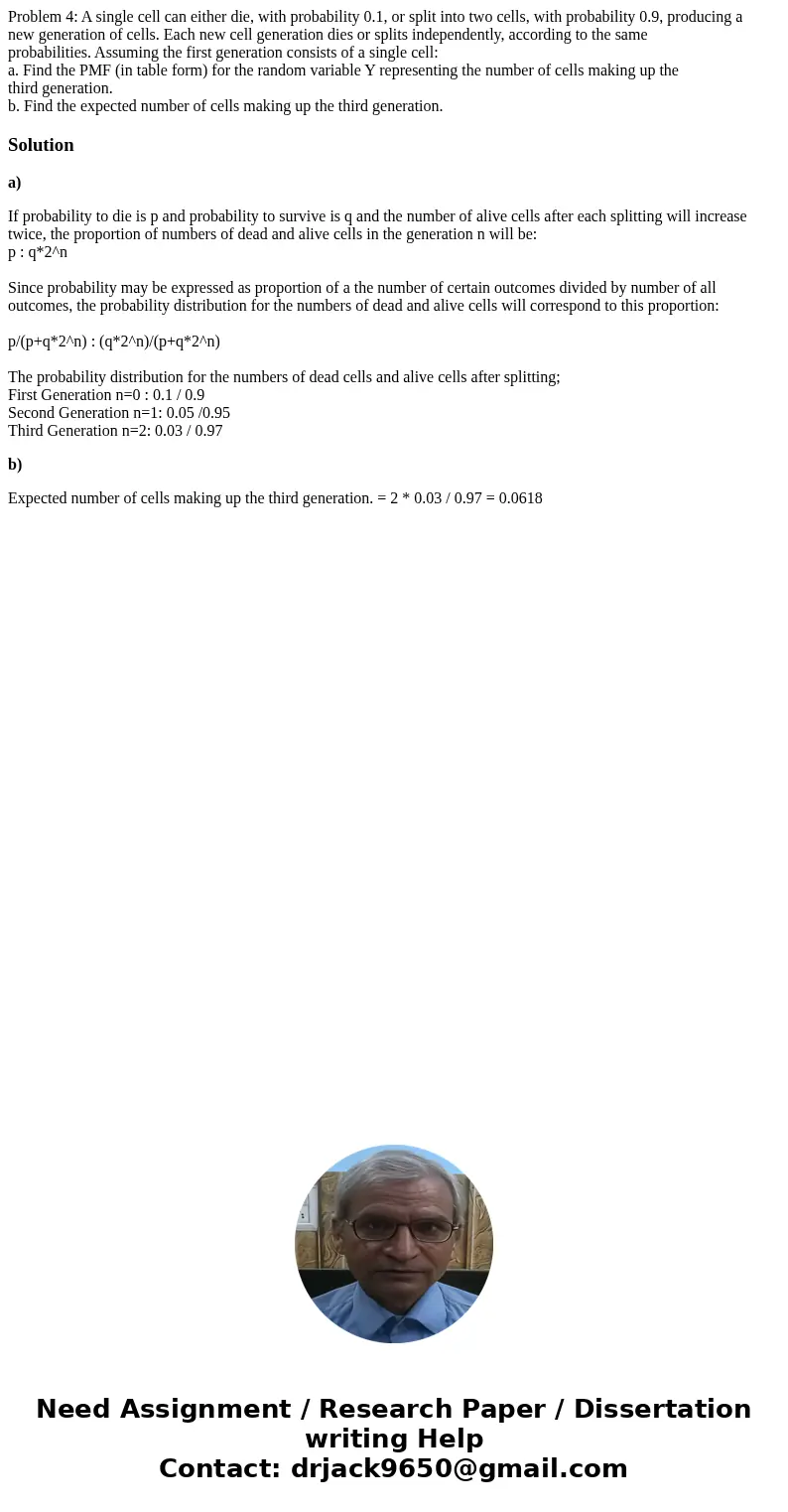Problem 4 A single cell can either die with probability 01 o
Problem 4: A single cell can either die, with probability 0.1, or split into two cells, with probability 0.9, producing a
new generation of cells. Each new cell generation dies or splits independently, according to the same
probabilities. Assuming the first generation consists of a single cell:
a. Find the PMF (in table form) for the random variable Y representing the number of cells making up the
third generation.
b. Find the expected number of cells making up the third generation.
Solution
a)
If probability to die is p and probability to survive is q and the number of alive cells after each splitting will increase twice, the proportion of numbers of dead and alive cells in the generation n will be:
p : q*2^n
Since probability may be expressed as proportion of a the number of certain outcomes divided by number of all outcomes, the probability distribution for the numbers of dead and alive cells will correspond to this proportion:
p/(p+q*2^n) : (q*2^n)/(p+q*2^n)
The probability distribution for the numbers of dead cells and alive cells after splitting;
First Generation n=0 : 0.1 / 0.9
Second Generation n=1: 0.05 /0.95
Third Generation n=2: 0.03 / 0.97
b)
Expected number of cells making up the third generation. = 2 * 0.03 / 0.97 = 0.0618

 Homework Sourse
Homework Sourse